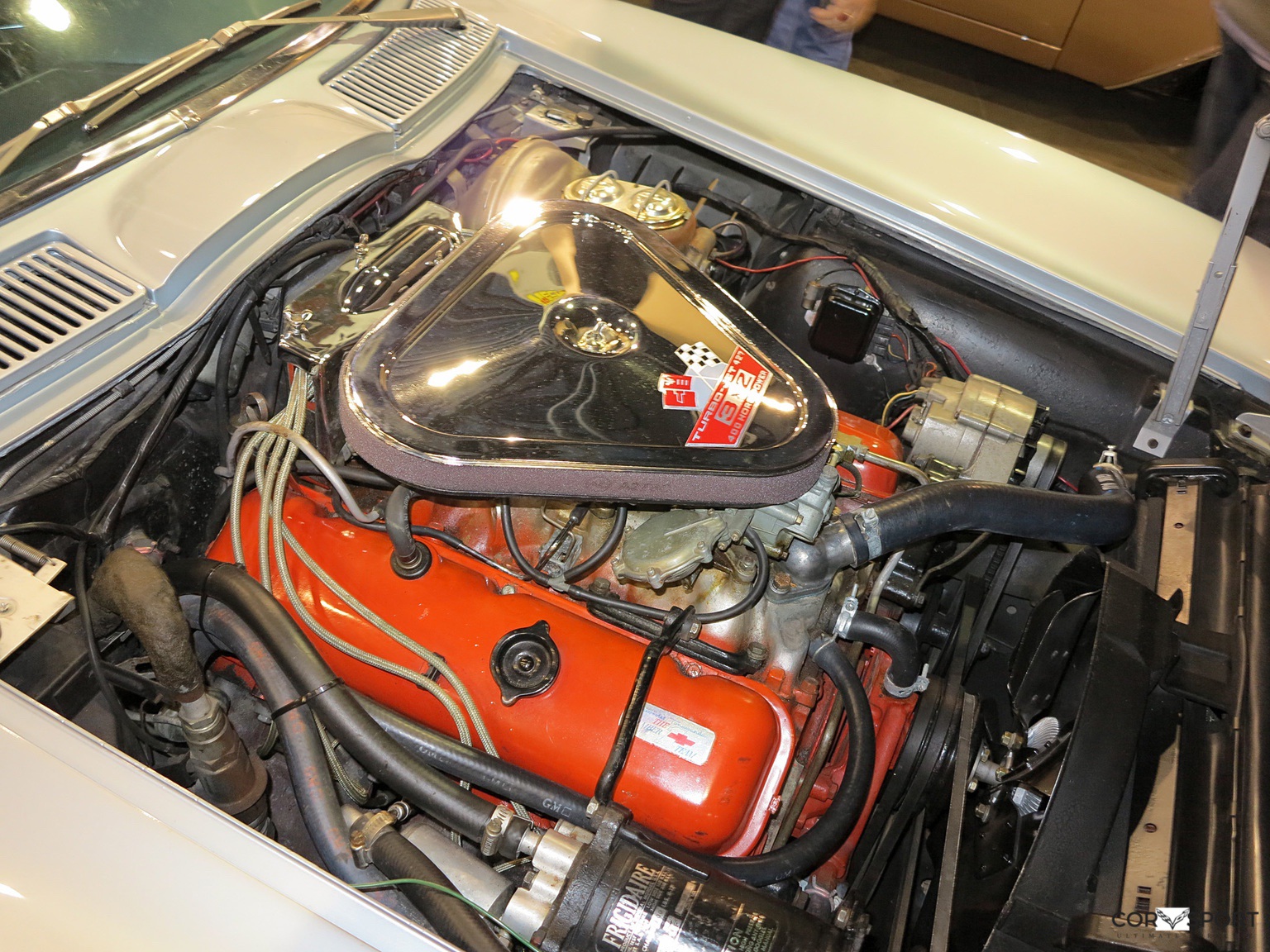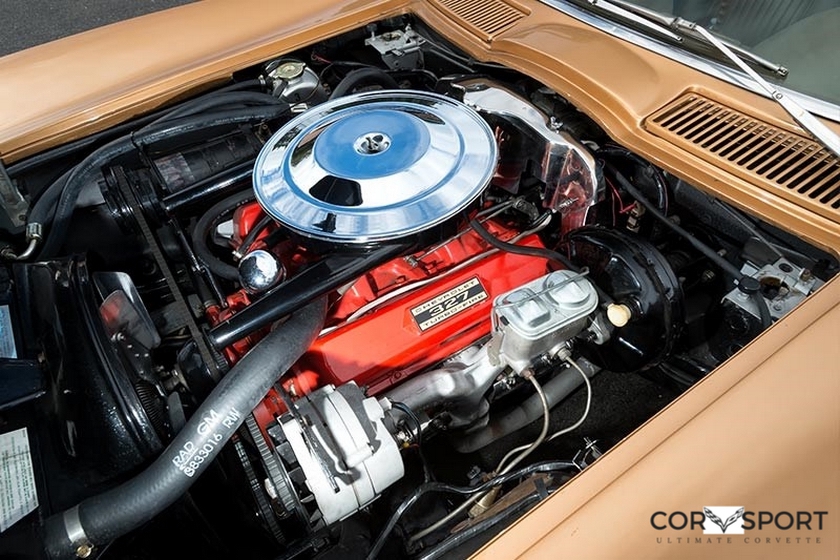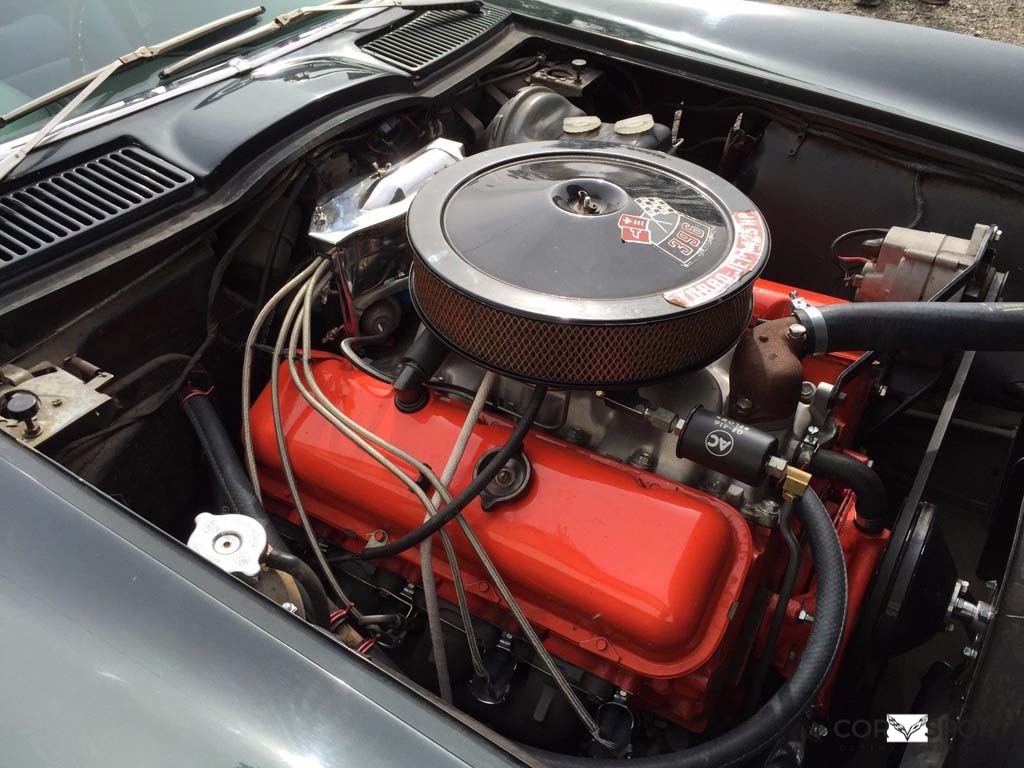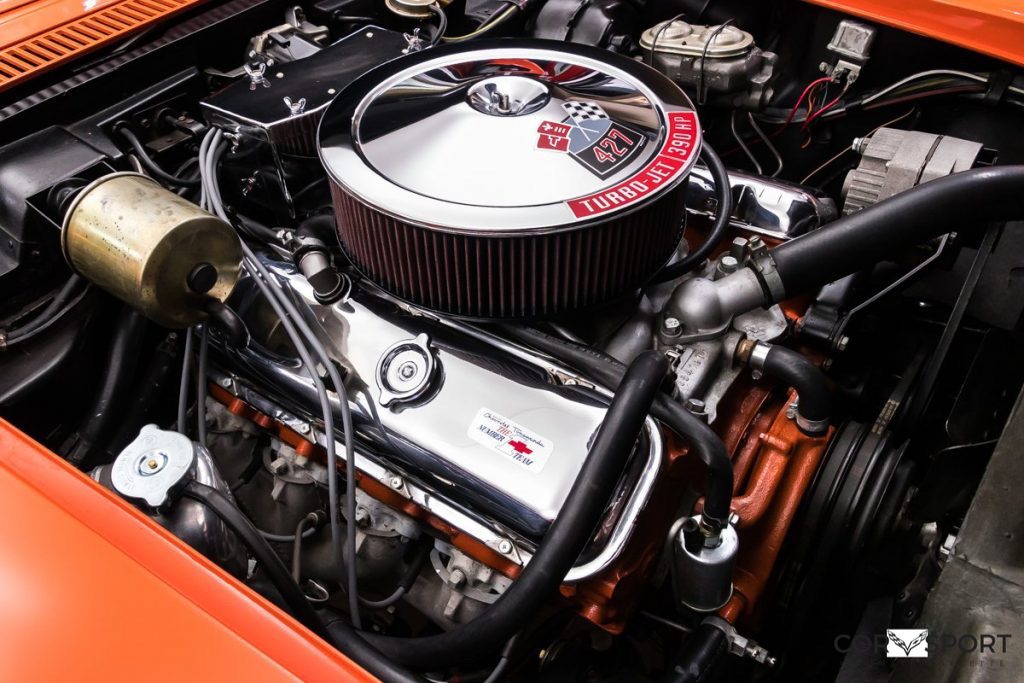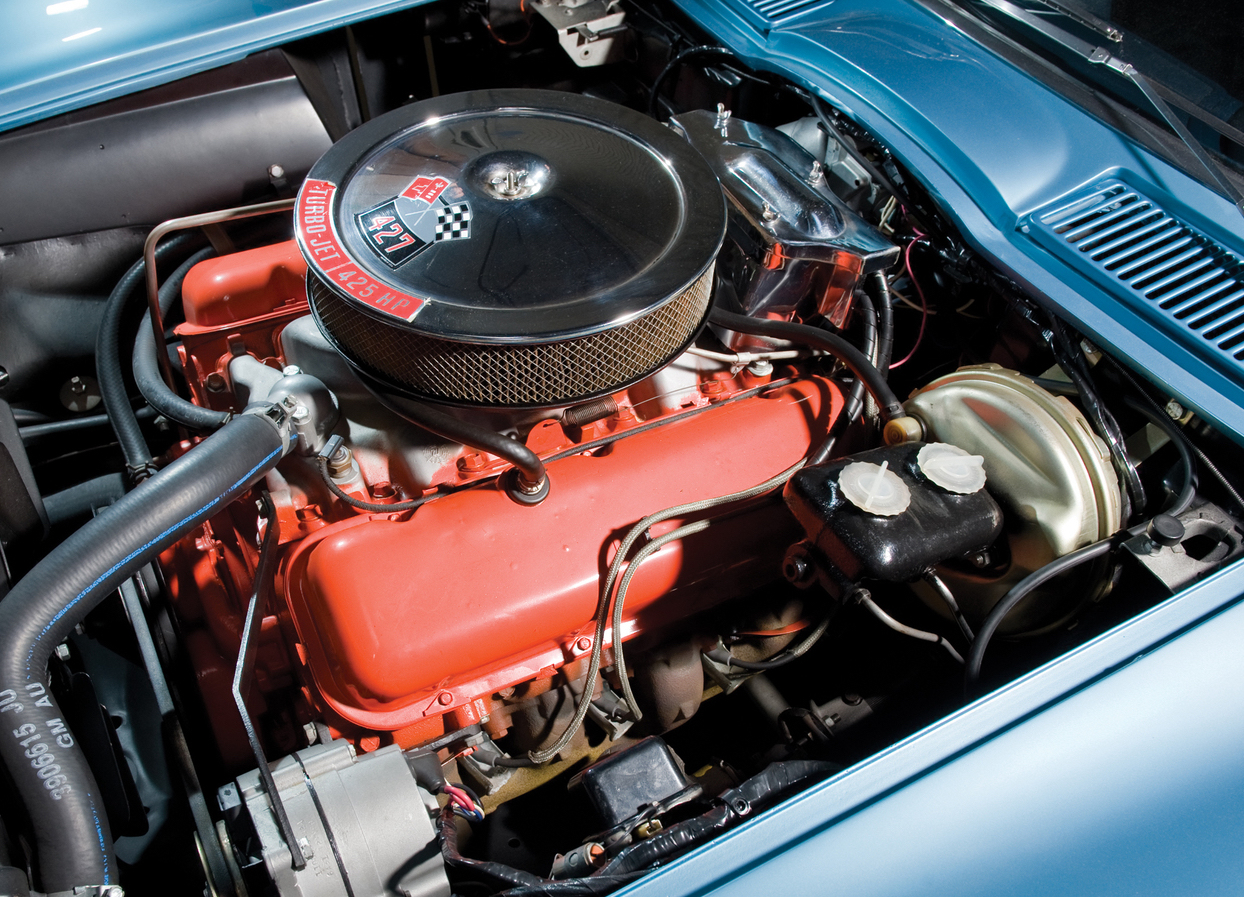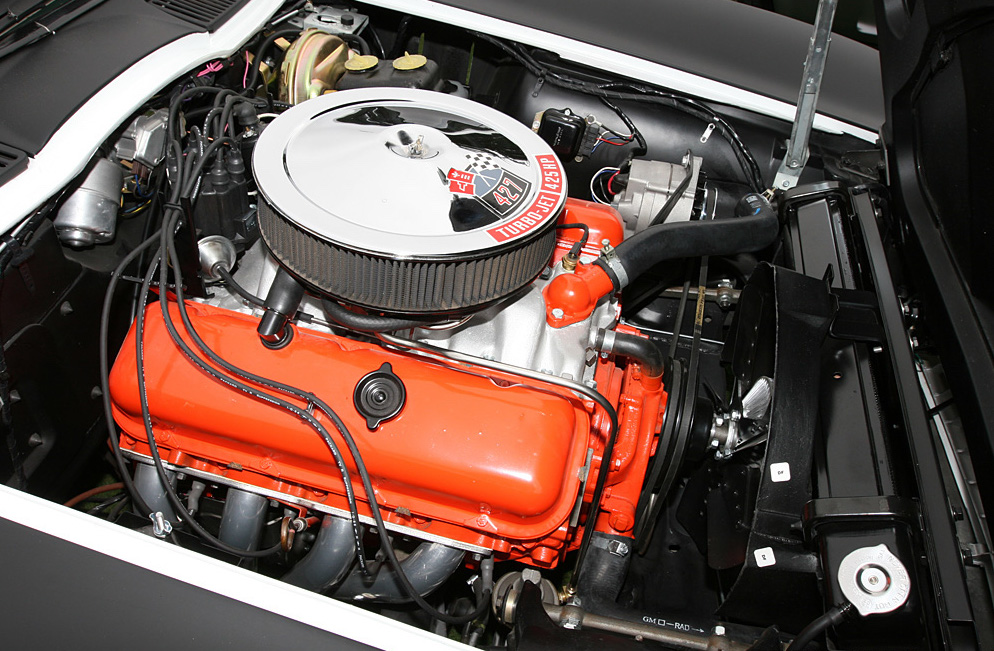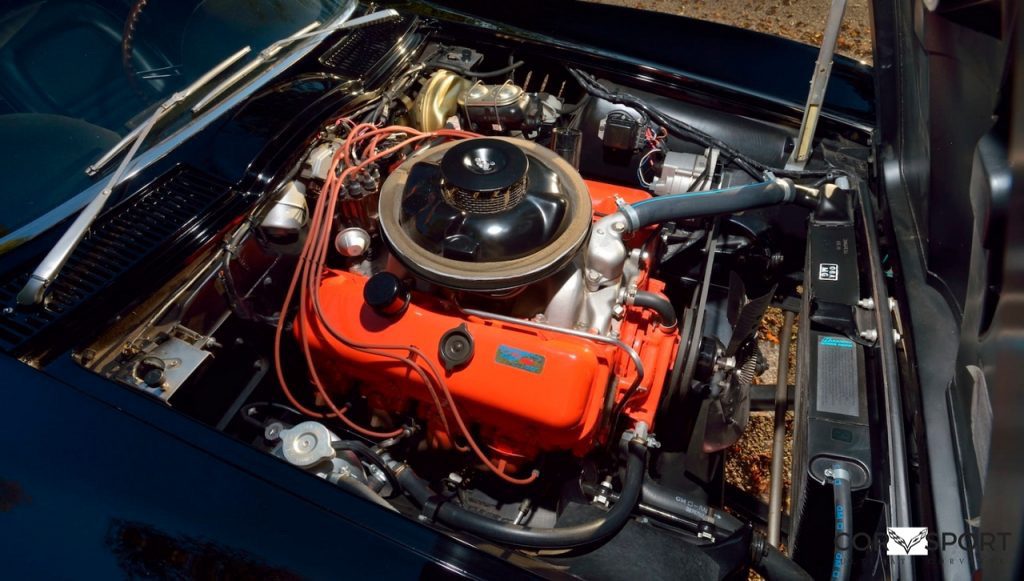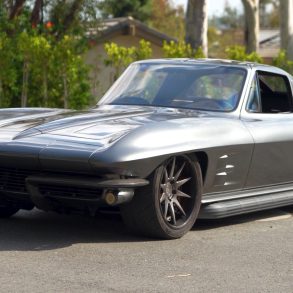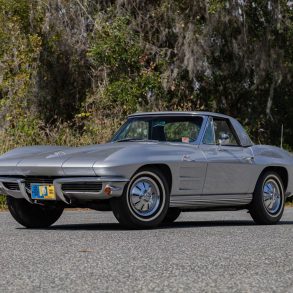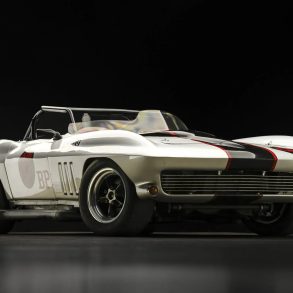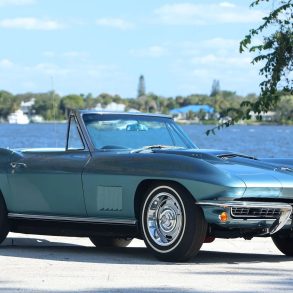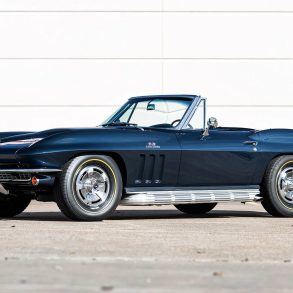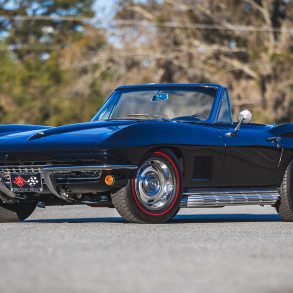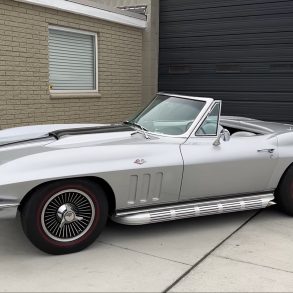C2 Corvette Engines – The Full List & Guide
The 1960s were an interesting time for the avid Corvette enthusiast. Chevrolet’s premier sports car was beginning to hit its stride, especially in terms of performance. While the GM small-block reigned supreme during the first generation of Corvette production, the 1960s would bear witness to the rise of the high-displacement big-block, complete with 400-plus horsepower on-tap.
This, of course, was on par with the times, as the horsepower wars of the muscle car era were in full swing. Consumers were in search of plentiful horsepower, and those at GM were happy to oblige. This resulted in the production of several extremely memorable power plants, the majority of which are still highly regarded today.
The following is a comprehensive account of C2 Corvette engine development, spanning from 1963-1967.
327CI Small-Block V8 Engine: 1963-67
A curious trend of sorts unfolded during the Corvette’s second generation of production. Though it was the GM small-block that saved the Corvette from almost certain failure, various big-block offerings stole during the greater portion of the 1960s. In fact, out of the five individual power plants to serve beneath the C2’s hood, only one (327CI V8) was of a small-block configuration.
Nonetheless, the 327CI V8 served the Corvette quite tirelessly. Several variants of this potent power plant spent time beneath the Corvette’s hood during the 1960s, a few of which proved more potent than others. The 327CI small-block was also offered in both carbureted and fuel-injected configurations.
The fuel-injected 327CI small-block reigned supreme in terms of rated output. These values peaked in 1965, when the “fuelie” 327 churned out 375 horsepower, and 350 lb-ft of torque. By contrast, the carbureted 327CI small-block’s output peaked at 365 horsepower and 350 lb-ft of torque throughout much of C2 production.
5.4L 327CI V8 Engine Specs:
- Horsepower: 340-365 HP @ 6,000 RPM (Carbureted), 360-375 HP @ 6,000 RPM (Fuel Injected
- Torque: 344-350 lb-ft @ 4,000 RPM (Carbureted), 352-350 lb-ft @ 4,000 RPM (Fuel Injected)
- Compression Ratio: 11.25:1 (High-Output), 10.5:1 (Base)
- Displacement: 327CI (5.4L)
- Cylinder Bore: 4.00” (101.6mm)
- Stroke: 3.25” (82.55mm)
396CI Big-Block V8 (L78) Engine: 1965
By the mid-1960s, the automotive industry’s manufacturing giants were tripping over one another in an attempt to offer the most potent performance car available. GM, being no exception to this rule, set out to significantly bolster the Corvette’s output. In doing so, plans were hatched to shoehorn a sizable big block beneath the Corvette’s hood.
Known as the L78 “Turbo-Jet”, GM’s new big-block proved more than powerful enough to achieve a high level of notoriety. With 396 cubic inches of displacement on deck, the L78 churned out 425 horsepower, and 415 lb-ft of torque, on an 11.0:1 compression ratio. As such, the L78 served as the highest-horsepower engine within GM’s intermediate lineup, from 1966-1969.
Perhaps most notable, was the L78’s distinction as the first production big-block V8 to be offered for the Corvette. Up until this point, the Corvette had been motivated almost solely by small-block power. The only exception, of course, came in the form of the original “Blue-Flame” inline-six, which served as the Corvette’s earliest power plant.
396CI Engine Specs:
- Horsepower: 425 hp @ 6,400 rpm
- Torque: 415 lb-ft @ 4,000 rpm
- Compression Ratio: 11.0:1
- Displacement: 396 cubic inches (6.5L)
- Cylinder Bore: 4.094 inches (103.98mm)
- Stroke: 3.76 inch (95.50mm)
427CI Big-Block V8 Engine: 1966-67
The Corvette’s big-block legacy began in 1965, with the release of the 396 cubic-inch L78. This powerplant was initially designed to meet increasing consumer demand, for all that was fearsomely fast, and unyielding in performance. After all, the horsepower wars were in full effect, and GM had little intention of being left in the dust.
However, those within GM’s design department were yet to satisfy their need for speed and were fast at work developing the 396CI’s larger, more powerful successor. This engine would ultimately be released in 1966 as GM’s new 427 cubic-inch V8. The 427 big-block packed quite a punch, producing a total output of 425 horsepower, and 460 lb-ft of torque. Finally, those in search of a production race car had found what they were looking for.
Interestingly enough, the 427 big block’s rated output is believed by many to have been purposely downplayed. This was actually common practice of the day, as manufacturers attempted to pacify anxious insurance companies. In reality, the 427’s actual output is widely believed to have been much closer to 450 horsepower, making GM’s big-block one of the most potent production power plants of its day.
427CI Big-Block V8 Specs:
- Horsepower: 425 HP @ 5,600 / 390 HP @ 5,200 RPM
- Torque: 460 lb./ft. @ 4,000 / 460 lb./ft. @ 3,600 RPM
- Compression Ratio: 11.0:1 / 10.25:1
- Displacement: 427 cubic-inches (7.0 L)
- Cylinder Bore: 4.25 inches (107.95 mm)
- Stroke: 3.76 inches (95.50mm)
427CI Big-Block Tri-Power V8 Engine: 1967
By the mid-1960s, big-block performance was all the rage. This is a point that was not lost on those at the helm of GM, as the Corvette’s options sheet began showcasing a number of high-displacement big-blocks. One such available powerplant was the 427CI Tri-Power V8. This engine served as a high-output variant of the previously mentioned 427CI big-block.
This powerful big block, dubbed L68, packed plenty of punch, yet was offered for only $326 over the Corvette’s base price in 1967. The L68 also proved quite simple to maintain, due primarily to its use of hydraulic lifters, as opposed to the solid lifters found in many other variants of the 427CI big-block.
The L68 427CI Tri-Power is perhaps the most under-valued of all Corvette big blocks during the era in which it was produced. Only 2,072 L68-equipped Corvettes were ever produced, making cars of this lineage somewhat scarce today. Nonetheless, with 400 horsepower on-tap, the 427CI Tri-Power V8 was nothing less than noteworthy in its own right.
427CI Tri-Power V8 (L68) Specs:
- Horsepower: 400 hp @ 5,200 rpm
- Torque: 460 lb./ft. @ 4,000 rpm
- Compression Ratio: 10.25:1
- Displacement: 427 cubic inches
- Cylinder Bore: 4.00” (101.6 mm)
- Stroke: 3.26” (82.80 mm)
427CI Big-Block L72 Engine: 1966
The 427CI L72 big-block served as the most powerful engine available for the Corvette during the 1966 model year. This power plant produced 425 horsepower, as well as 460 lb-ft of torque. Interestingly enough, when initially released, the L72’s output was rated at 450 horsepower, though his value was subsequently reduced, at least on paper.
Interestingly enough, the 427CI L72 big-block did not stay around for long. In fact, this powerplant was only offered for the Corvette during the 1966 model year. By 1967, the L72 had been wiped from the Corvette’s option sheet, ultimately being replaced by the new L71 big-block.
During the 1966 model year, a total of 5,528 Corvettes left the factory equipped with a 427CI L72 big-block. Additionally, this powerplant was utilized by other GM models through the 1969 production year, including the Caprice, Impala, Bel Air, Chevelle, and Camaro.
427CI V8 (L72) Specs:
- Horsepower: 425 hp @ 5,200 rpm
- Torque: 460 lb./ft. @ 4,000 rpm
- Compression Ratio: 11.0:1
- Displacement: 427 cubic inches
- Cylinder Bore: 4.27” (108.45 mm)
- Stroke: 3.76” (95.50 mm)
427CI Big-Block L71 Engine: 1967
GM took big-block production one step further during the 1967 model year, with the release of the 427 cubic-inch L71 V8. This powerplant was quite similar to the L72 before it, with a few minor differences. The most significant was the L71’s carburetor/intake layout, as well as the engine’s slightly higher horsepower rating.
While the earlier L72 big-block utilized a single four-barrel carburetor, the L71 featured three individual double-barrel carbs. This arrangement, paired with an aggressive solid-lifter camshaft, made the L71 a potent contender. A custom-spec intake manifold, designed specifically for the L71, also came as standard fare.
Interestingly enough, the L71’s rated output caused waves of its own, but not for reasons you might expect. Prior to the L71’s release, major auto manufacturers steered clear of publishing any official output ratings in excess of 425 horsepower, in a bid to keep safety-conscious government entities and insurance companies at bay. The L71 broke this mold in striking fashion.
427CI V8 (L71) Specs:
- Horsepower: 435 hp @ 5,200 rpm
- Torque: 460 lb./ft. @ 4,000 rpm
- Compression Ratio: 11.0:1
- Displacement: 427 cubic inches
- Cylinder Bore: 4.25” (107.95 mm)
- Stroke: 3.76” (95.50 mm)
427CI Big-Block L88 Engine: 1967-69
Make no mistake, the L88 427 CI big-block was nothing short of a pure-bred race engine. At the time, GM had bowed out of participation in factory-backed racing, in adherence to the infamous AMA-ban of the era.
However, those in the know could still order a race-ready Corvette, by simply hand-picking the right combination of RPO codes at the time of purchase. The L88 itself was the motivating force behind this backdoor racer.
Perhaps most intriguing, is the fact that most are in agreement that the L88’s output was purposefully downplayed. Though this powerplant “officially” produces 430 horsepower, most reports estimate that the L88 actually turned out much closer to 550 horsepower. However, advertising the L88’s output as such would have likely prevented its actual release to the public.
Much of the L88’s power came courtesy of an extremely aggressive solid-lifter camshaft, and a 12.5:1 compression ratio. The L88 was also supplied with fuel via a monstrous 850-cfm Holley carburetor. Ironically, this was the largest Holley carburetor ever paired to a production GM engine.
427CI V8 (L88) Specs:
- Horsepower: 430 hp @ 5,200 rpm
- Torque: 460 lb./ft. @ 4,000 rpm
- Compression Ratio: 12.5:1
- Displacement: 427 cubic inches
- Cylinder Bore: 4.25” (108 mm)
- Stroke: 3.76” (95.2 mm)
Want to learn more about Corvette engines? Check out our list of every C1 Corvette engine ever made.


